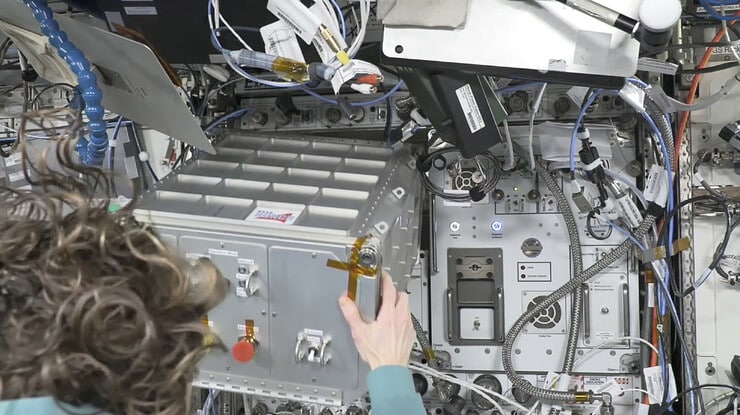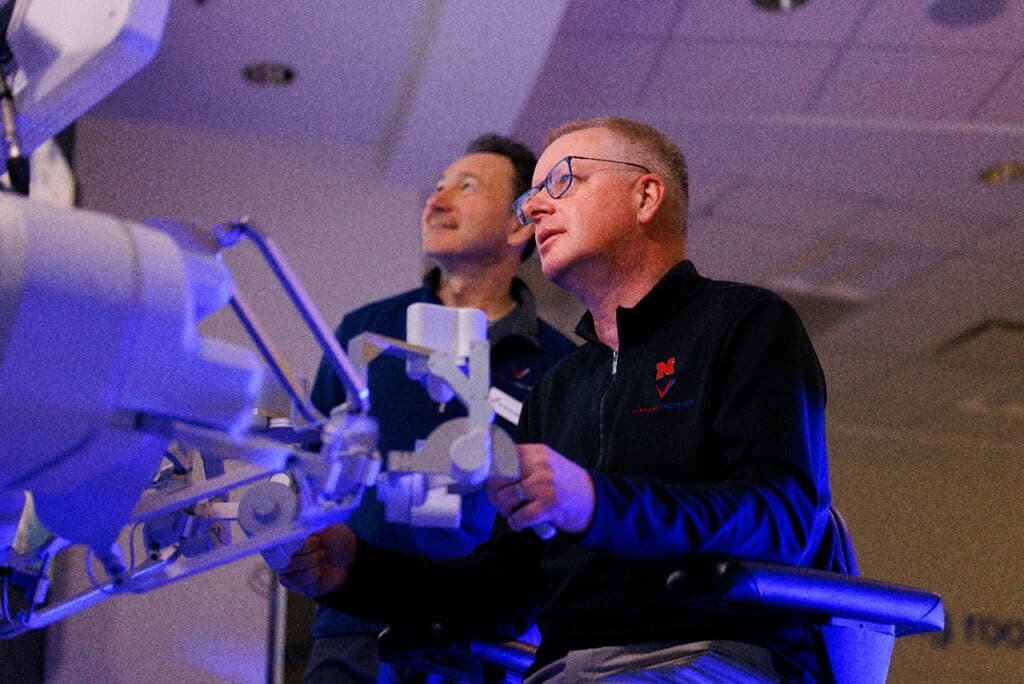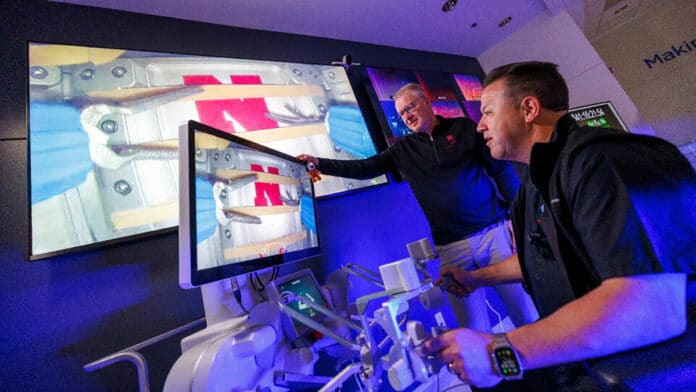Technology is advancing and making it possible for surgical simulations to be performed even in space.
A team of six surgeons from across the United States has successfully operated a surgical robot aboard the International Space Station. The miniature robot created at the University of Nebraska-Lincoln completed its first surgery demo in zero gravity on Saturday. This achievement could have implications for future Mars missions or for remote surgeries on Earth.
The robotic surgical arm called spaceMIRA (Miniaturized In Vivo Robotic Assistant) was sent to the International Space Station aboard a SpaceX rocket earlier this year. It was developed by the University of Nebraska-Lincoln and a private company, Virtual Incision. Recently, doctors on Earth used it remotely to carry out a series of slicing and grabbing maneuvers meant to simulate surgery on human tissue.
About 30 inches long and weighing around 2 lbs (0.9 kg), SpaceMIRA performed its maneuvers while inside a microwave-oven-sized experiment locker. The cylindrical device looks a bit like an oversized stick blender, with two arms – one with a grasper and the other with scissors. The operator can see the robot as it works through an integrated, articulating camera.

The surgical demonstration was executed with a signal latency ranging from two-thirds to three-fourths of a second gap for action at the control center to be executed by the robot aboard the Space Station.
A large monitor on the right of the control center showed multiple views of Earth from the Space Station, and screens on the left side provided the robot’s operator a view of the robot’s hands and the workstation inside its box. A total of 10 rubber bands tethered on metal panels to the left, right, and center before the robot.
The surgeons’ task was to maneuver the robot into position and use its hands to grasp the band, pull it taut, and cut it while simulating the motions, tension, and texture of tissue in surgery. After each band was cut in the front and the back, the ends that were still attached floated nearly motionless in microgravity.
In a brief orientation session, the Virtual Incision engineer, Lou Cubrich, warned the surgeons not to cut the bands into multiple pieces and not to risk breaking the robot by bumping it into the sides and back of the experiment locker. Any loose debris could prove disastrous to the Space Station.
The robotic arm was tested by six surgeons at Virtual Incision’s headquarters in Lincoln, Nebraska. On the other hand, the mission control was handled through NASA’s Payload Operations Center at Marshall Space Flight Center in Huntsville, Alabama.

Despite a latency factor of between 0.5 to 0.75 of a second, all of the participants successfully completed the task during the two-hour testing period. To compensate for the latency, the researchers experimented with different scaling factors, which allowed for larger movements on Earth to result in smaller movements aboard the ISS.
“You have to wait a little bit for the movement to happen; it’s definitely slower movements than you’re used to in the operating room,” said Michael Jobst, a Lincoln-based colorectal surgeon, as he took the first turn at the controls.
Jobst has participated in 15 previous procedures with MIRA, including using it in a 2021 clinical study to remove part of a patient’s colon during procedures at Bryan LGH Medical Center in Lincoln.
The surgeons were awestruck at the fact that spaceMIRA could operate in space, but it’s even more exciting to think about its potential applications on Earth.
“SpaceMIRA’s success at a space station orbiting 250 miles above Earth indicates how useful it can be for health care facilities on the ground,” said UNL’s Shane Farritor, Lederer Professor of Engineering and a Virtual Incision co-founder.
